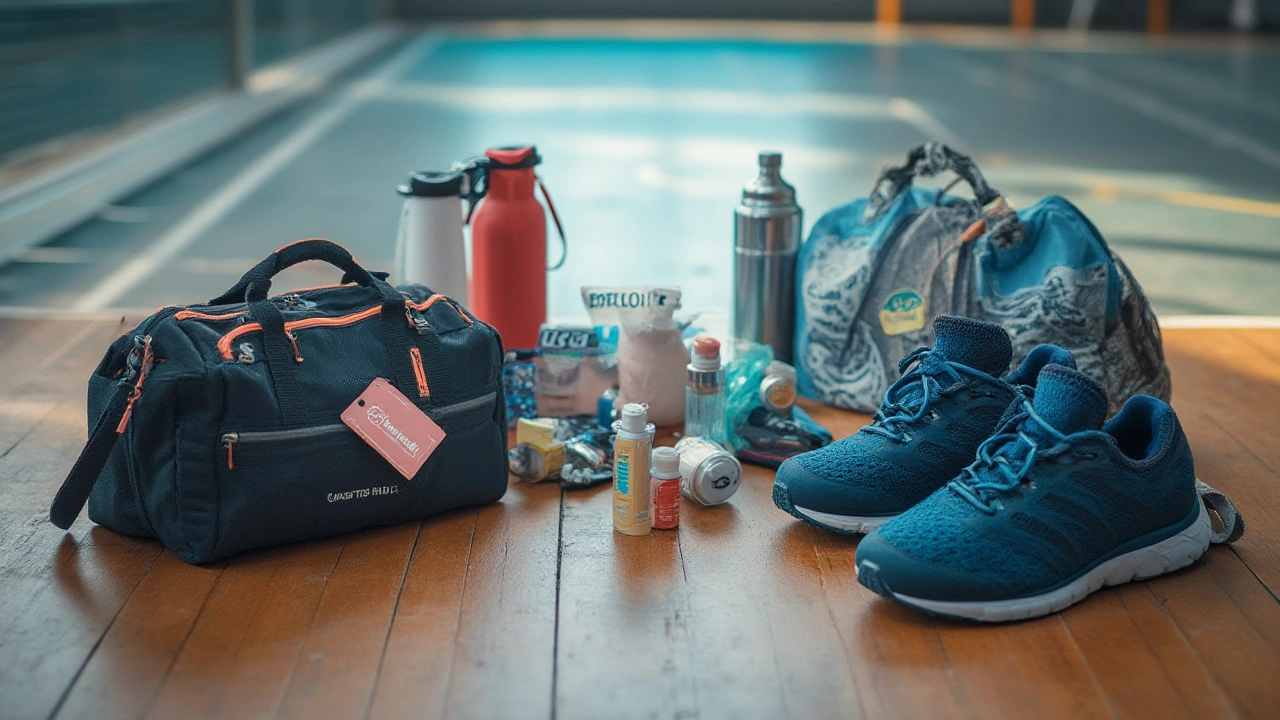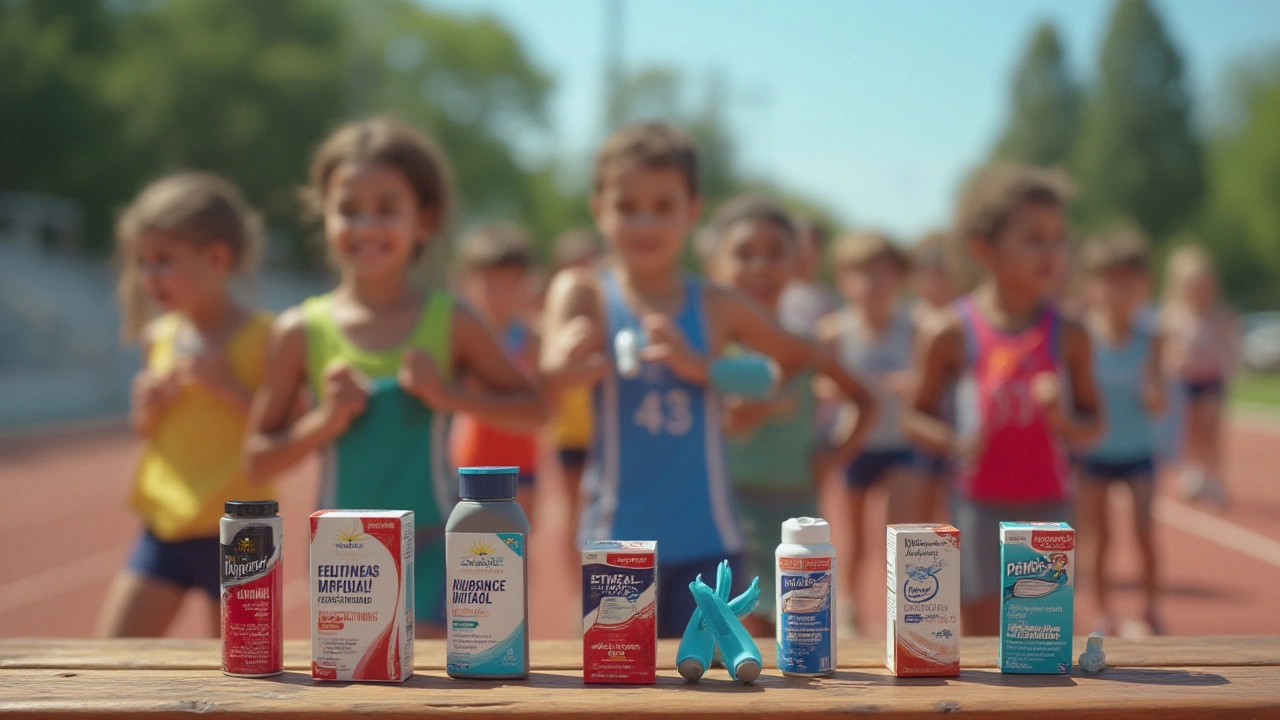You think breaking a sweat is tough? Imagine fighting for air mid-race. That’s life for athletes with exercise-induced bronchospasm (EIB). One minute you’re flying down the track, lungs burning the good burn. The next, your airways slam shut, and you’re gasping. Ventolin, or albuterol, is the first rescue for many, but not everyone can use it—or wants to. Some face side effects, others chase something longer-lasting or worry about doping rules. Good news: the FDA has nodded to several Ventolin inhaler alternative options, and the scene is more diverse than most realize.
Understanding EIB in Athletes and the Limits of Ventolin
Exercise-induced bronchospasm is a sneaky beast. It strikes during or after strenuous activity, even in people without classic asthma symptoms. Picture this: up to 20% of the general population faces EIB, and almost double that among elite athletes—especially swimmers, skiers, and runners. Why? Cool, dry air and high breathing rates rattle their airways, making them tighten up and spit out mucus. This isn’t rare. If you’ve ever watched a footballer pause, hands on knees, inhaler out, you’ve witnessed it.
Most doctors hand out Ventolin (salbutamol in the UK, albuterol in the US) as the go-to. It’s a quick-acting beta-2 agonist that relaxes airway muscles in minutes. Sounds ideal, right? Until you get the jitters from your morning inhalation, or your heart starts skipping after that extra puff before a game. Some end up with racing heartbeats or headaches. Worse, certain sports federations limit allowed doses, since mega-doses might give a stamina edge—or at least cause suspicion. What if you need something different? Or just want less hassle with side effects?
If you’re hunting for a solution, you’re not alone. “I’m tired of feeling like I chugged six cups of coffee before training,” a rugby mate told me once. Time to talk options.

Top FDA-Approved Alternatives to Ventolin for EIB
Your search for a replacement or backup shouldn’t feel like a scavenger hunt. Luckily, several alternatives exist, and they’re all cleared by the FDA for EIB or asthma. Here’s what athletes and their coaches should actually know—no fluff, just medicine that works.
- Levalbuterol (Xopenex): This is like a cleaned-up cousin of albuterol. It’s just the ‘R’ enantiomer, which gets the job done with fewer jitters and less risk of a pounding heart. Studies show similar performance in opening up airways, but many notice milder side effects. For people who can’t stand the edginess of Ventolin, levalbuterol is the next try.
- Terbutaline (Brethine): Rarely the first pick, but works as a rapid-acting bronchodilator. It’s sometimes used as a backup, especially for patients sensitive to classic SABAs (short-acting beta-agonists like albuterol).
- Salmeterol (Serevent) and Formoterol (Foradil): These are long-acting beta-2 agonists (LABAs). They stick around up to 12 hours, so athletes can inhale before a competition and not worry mid-match. Here’s the kicker: they’re not rescue inhalers. You take them in advance, often with inhaled steroids, to prevent EIB rather than stop it once it starts. A 2012 Cochrane review found these work especially well for chronic EIB sufferers who want consistent protection over stop-start relief.
- Ipratropium Bromide (Atrovent): This is an anticholinergic inhaler used off-label for EIB. It takes a bit longer to kick in than Ventolin, but up to 30% of patients find it works at least as well, particularly those with heart issues who can’t risk beta-agonist drugs.
- Cromolyn Sodium (Intal) and Nedocromil: These are when prevention is better than rescue. They “train” airways not to spasm in response to triggers—used 15 minutes before exercise, they’re a decent option for predictable schedules like swim meets or training. However, they’re less potent than the fast-acting alternatives and rarely first-line anymore. Still, handy for kids or those who can’t use beta-agonists.
- Montelukast (Singulair): This one’s a leukotriene receptor antagonist. Instead of relaxing muscles, it blocks the cascade of molecules that inflame airways. It’s a pill, taken daily, and works nicely alongside inhalers in stubborn cases. Useful for athletes who want both control and less device fussing.
Check how these compare head-to-head? Here’s a quick-glance table, based on peer-reviewed studies and FDA labeling:
| Alternative | Form | Onset (minutes) | Duration (hours) | Can be a Rescue? |
|---|---|---|---|---|
| Levalbuterol | Inhaler, Nebulizer | 5–10 | 4–6 | Yes |
| Salmeterol | Inhaler | 15–20 | 12 | No |
| Formoterol | Inhaler | 5–10 | 12 | No* |
| Ipratropium | Inhaler | 15–30 | 4–6 | Yes |
| Cromolyn | Inhaler | 10–15 | 1–2 | No |
| Montelukast | Pill | Single daily dose | 24 | No |
*Note: Formoterol works quickly enough to act as a rescue, but official labeling reserves it for control, not acute relief.
Wondering about side effects? Most users report fewer shakes and palpitations with levalbuterol or antimuscarinics like ipratropium. LABAs, on the other hand, should always be paired with an inhaled steroid to avoid rare but serious risks of worsening asthma control. If you’re sensitive to pills, montelukast can rarely trigger mood changes—but it’s otherwise well-tolerated.
If you’re already thinking, “Where do I actually get these alternatives?” or “Which is legal for me as an athlete?” Here’s a helpful breakdown: Most global and UK sporting bodies, under WADA rules, say beta-agonists (like Ventolin/levalbuterol) at prescribed doses are allowed, provided you have a legitimate diagnosis and script. LABAs are also OK in combination inhalers, but check your association’s list before stacking meds. Always disclose your inhalers to medical teams before competitions.
Want a deeper look at specifics and legalities? You can read more detailed reviews of each Ventolin inhaler alternative here—this guide gets into the nitty-gritty with firsthand stories and up-to-date clinical data.

Smart Tips for Athletes: Using EIB Medications for Peak Performance
Medication alone rarely wins the match. Smart use—paired with training tweaks and careful planning—makes the difference. If you’re new to EIB or struggling with breakthrough symptoms, try this checklist in real life:
- Take your inhaler before warm-ups, not just before the event. This potentiates the effect and gives the medicine time to open airways before your lungs work hardest. Studies show that warming up first, then using a reliever, cuts down on further attacks.
- Don’t skip routine controller meds if you’re prescribed any. Many athletes get by with just a rescue inhaler, but controllers (like daily steroids or montelukast) mean far fewer bad days, especially when training spikes or during allergy seasons.
- Experiment with different formulations. What works in winter rugby might not cut it during summer cross-country. Dry powder inhalers, metered dose inhalers, or even nebulizers all feel different and absorb differently, particularly in cold or humid conditions.
- Hydrate and avoid allergens pre-event. EIB is worse in dry, dusty, or cold air, so covering your mouth with a scarf or training indoors on pollen-heavy days can help as much as the right medication.
- Know your dosing limits for competitions: The World Anti-Doping Agency allows up to 1600 micrograms of salbutamol in 24 hours by inhaler. Above that, you might need a Therapeutic Use Exemption (TUE) and extra paperwork. Don’t get caught out.
If symptoms break through despite all this, don’t just up the dose. That’s the fast track to side effects and a flagged drug test. Sit down with your doctor or team medical lead. Sometimes switching to a different active ingredient makes all the difference, or adding a preventive pill like montelukast smooths things out. Pro athletes from Mo Farah to local park runners have made these tweaks and found relief without relying on mega-doses of albuterol.
For kids and teens in sports, always check inhaler technique—poor usage is the number one reason rescue meds fail. Consider supervised “practice puffs” before race day. Some clinics now offer digital inhalers that beep if not used correctly—nerdy, but effective.
If all else fails, talk to your healthcare provider about lung function tests and maybe a trial of a different class of medication. Modern treatments offer choices suited for nearly everyone—you don’t have to settle for feeling shaky or worrying about the clock running out on your meds during a big event.
Your ideal inhaler—or combo—should be as tailored as your training plan. That’s how you outrun not just the competition, but your own limits.

